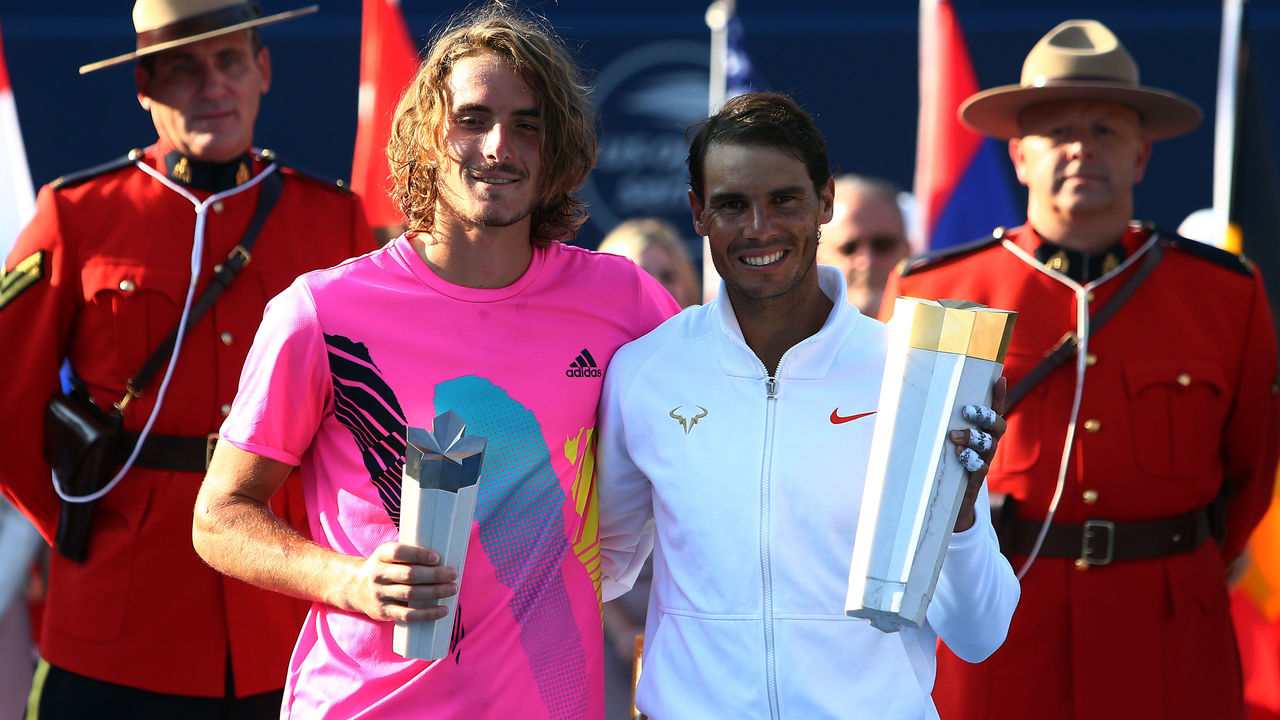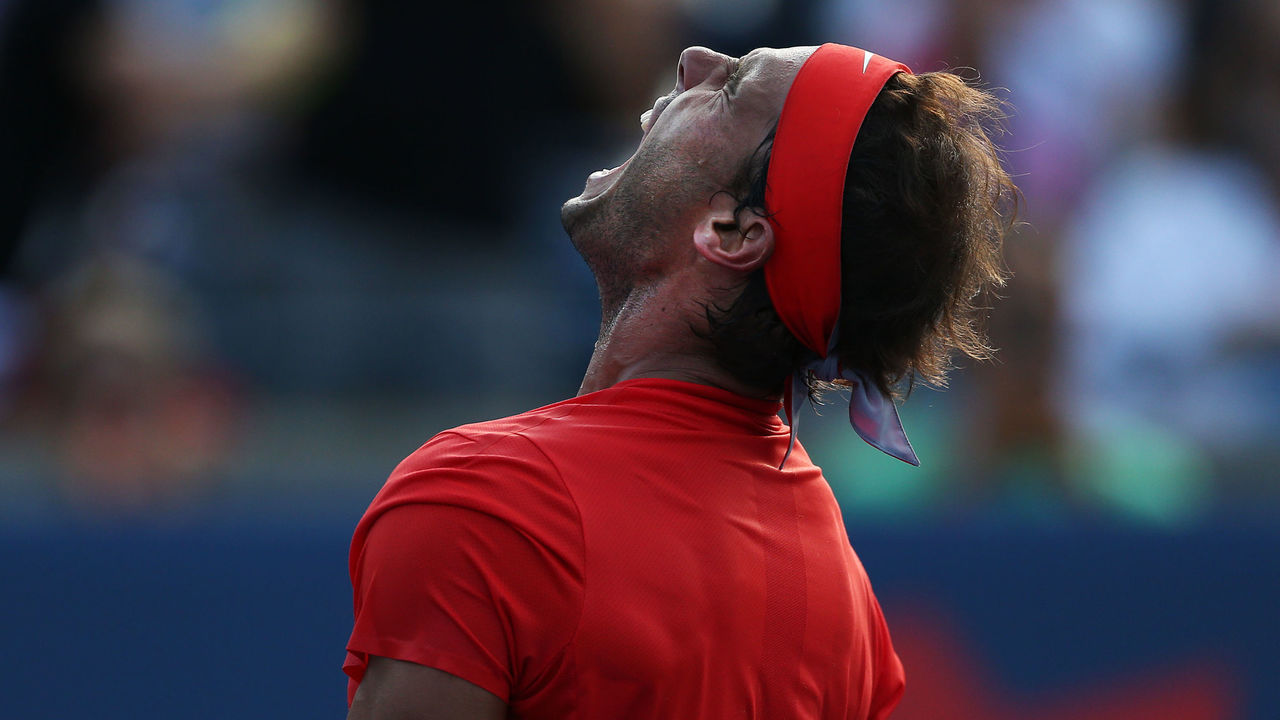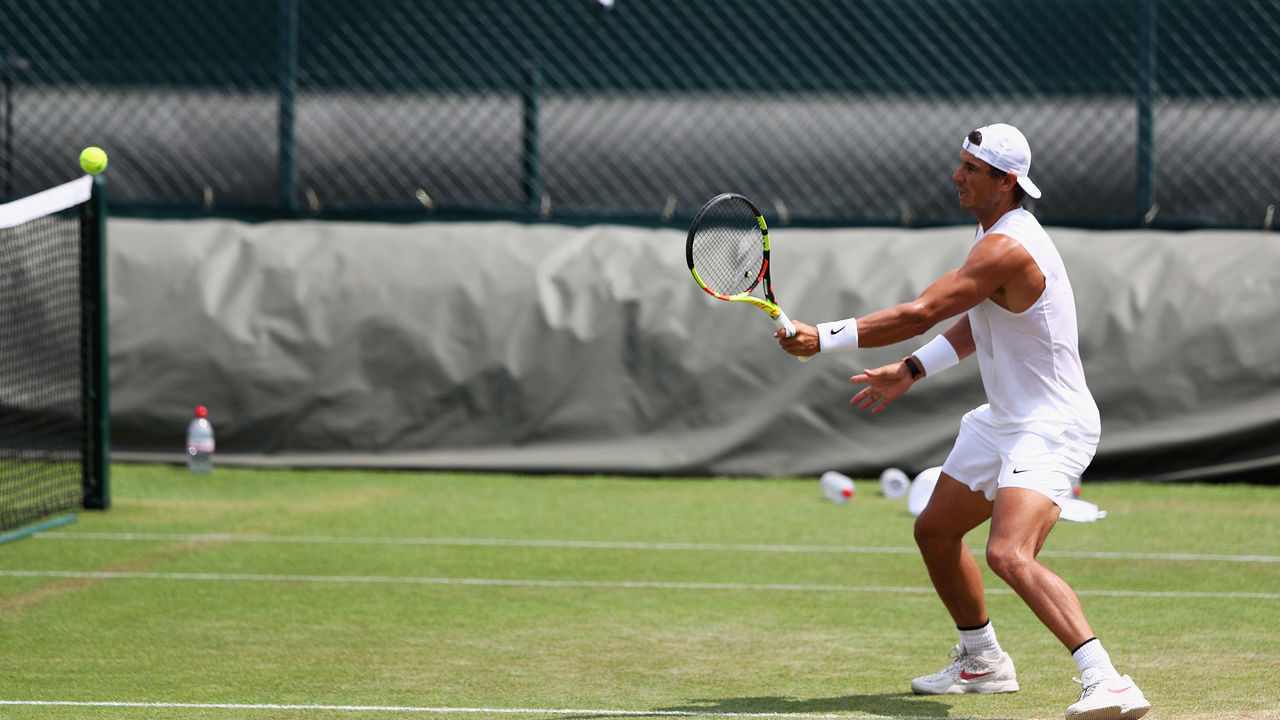'This beast, this monster': Tsitsipas gets an education from Nadal in Toronto
On Saturday evening, shortly after he'd beaten Kevin Anderson to reach his first career Masters 1000 final, Stefanos Tsitsipas was asked if he looks to learn about the game from watching the greatest-ever practitioners of men's pro tennis.
"Yes," he replied. "I'm learning a lot from Roger (Federer), from Rafa (Nadal), from Novak (Djokovic). Trying to combine all that into one thing."
The next day, on Tsitsipas' 20th birthday, Nadal gave the breakout Greek star a higher education on center court. For the bulk of the Rogers Cup final in Toronto, the veteran lefty taught a master class in disciplined aggression, point construction, pressure application, and physicality, ultimately claiming the title in straight sets, 6-2, 7-6 (4).
With his unparalleled retrieving ability and his often ridiculously deep returning position, Nadal sometimes gets mislabeled as a defensive-minded player. He can certainly fall back on those defensive chops when facing powerful, big-serving opponents, but Nadal's offense is as potent as anyone's. And this match largely showcased attack-mode Nadal at his best. He played inside the court, yo-yoed Tsitsipas from one corner to the other, and put away virtually every midcourt forehand he saw. His first set was as ruthless as it was pristine.
Things got unexpectedly complicated in the second, when Nadal - who'd lost three service points in the entire match - gift-wrapped Tsitsipas a break while serving for the championship at 5-4. That gave new life to the Greek, who'd seemingly been running on vapors for most of the afternoon. True to his word, Tsitsipas took a cue from Federer and started to take the ball earlier on the backhand side, mitigating the damage Nadal had been doing with his high-arcing forehands. As Nadal stayed tight, Tsitsipas improbably fought back to earn a set point. But Nadal saved it by the wisps of his hair - with a tape-clipping half-volley - and eventually pulled away in a tense tiebreak to win his 33rd Masters title, and his first on a hardcourt since 2013.

Nadal is now 40-3 on the season, and one of those losses was a fifth-set retirement due to injury while another was a five-hour Wimbledon semifinal against Djokovic that went to 10-8 in the decider. It helps that he's completely avoided Federer, who's beaten him five straight times, but when it comes to beating the opponents in front of you, Nadal has been as dominant in 2018 - his 17th year on Tour - as he, or anyone, ever has. It's hard to overstate just how insane that notion would've seemed two years ago.
Meanwhile, the Tsitsipas joyride is over, and now we'll see how much of this early success he can sustain. At Rogers Cup, he toppled four consecutive top-10 players, including Djokovic, but the road ultimately went through Nadal, who's a top-10 player the way a tsunami is a top-10 wave. You can't really apply the same lessons from one to the other.
Facing the tsunami was a clarifying experience for Tsitsipas. Asked afterward what he'd learned from the match, he responded: "How much I have to work. How much gap there is between him and me in our games, and how much more I need to - I don't want to be rude, but bust my ass on the court. Work more hours and become stronger and a more solid baseliner. And withstand pressures - physical pressures on the court that to him just seem like nothing special. That's the big difference between my game and his game."
There's a bit more to it than that, though. Nadal's stamina and dexterity and sheer kinetic force are so obvious to the naked eye that it can be easy to forget about his intelligence, and the unique way he thinks the game. Those things don't exist independently of each other - his physical advantages afford him tactical options that are simply not available to others - but Nadal is perhaps the sport's most astute game-planner and problem-solver. He loves the fight, but he also loves the chess match. As ever, his approach against Tsitsipas was a perfect marriage of physical and mental fortitude.

"He was just trying to make me tired, make me give up on the rallies," Tsitsipas said. "And he was always there inside the court, made me run left to right. And always knew that his physical (condition) is better than mine. So I'm pretty sure his mindset today was to be patient and make (me) suffer on the court. ...
"And the patience that Rafa has is amazing. He never cracks. He will always grab you like a bulldog and he will always make you suffer."
The thing is, most athletes talk about being motivated to work hard. Everybody says they "want it." So, what makes one man's hard work and desire more fruitful than another's? Can Nadal really want it that much more than everyone else? He may have been blessed with innate physical gifts that afford him a huge (extremely muscular) leg up, but to do what he's done for as long as he's done it, he's had to be both diligent and smart along the way.
"If I lose speed sometimes, if I lose this energy that (you have) when you are younger, I need to add other things on my game," Nadal said. "If you want to keep having the same success that you had 10 years ago, you need to add things to your game. So that's why I wake up every morning. And I don't understand going on court to practice. I go on court to improve something. That's the way that I understand my career, the way that I understand the sport. Because I really don't find for myself a motivation to go on court without the goal of trying to do something better."

When you hear Nadal say that, it's hard not to think back to 2016, when he was struggling with a lingering wrist injury, his forehand was a hot mess, and his confidence was shot. He'd failed to advance past the quarterfinals in eight straight Slams. He kept losing big matches in increasingly unlikely and painful fashion. He hadn't won a hardcourt title in almost three years. But quietly, while his forehand wandered the woods, other elements of his game began to improve - in much the same way that being robbed of one sense is said to sharpen the others.
The most significant evolution was his backhand, which was already solid but had historically been more of a rally-extending shot for him. Nadal started hitting it harder and flatter; he started using it as a rally-ender. He developed more of an appetite for the net, where his skills had always been underrated. He put a bit more bite behind his second serve. More recently, he's shown a growing proclivity for artful, deceptive drop shots. His results still didn't really improve until he took several months off to rest his body and let the wrist fully heal, but once he did, and once his forehand finally started to look like his forehand again, Nadal had a more complete arsenal surrounding it.
"It is amazing what he has built as a player," Tsitsipas said. "I mean, he was, like, normal like all of us, and he managed to become this beast, this monster that he is today. It's true. That's how you feel when you play against him. So I need to work much more, as I said, and hopefully I can reach his level one day."
Tsitsipas has a long way to go to get there, but he has the raw ability, the blueprint, and seemingly the right approach. After his stirring semifinal win over Anderson, he scrawled a mantra on the courtside camera: "It never gets easier, you just get better."
That's a message Nadal would surely endorse.
(Photos courtesy: Getty Images)